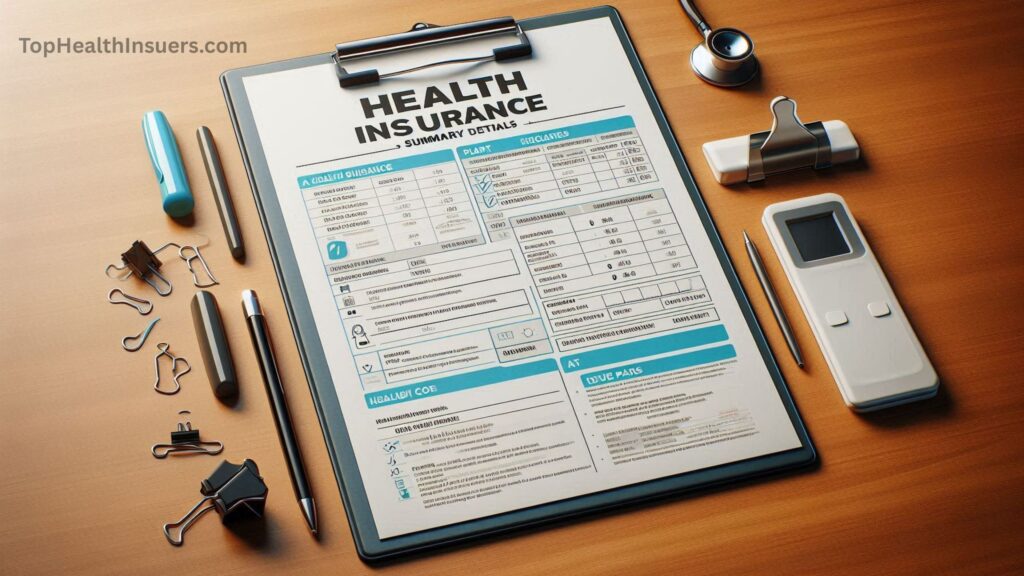How do I Read a Summary of Benefits and Coverage?
Understanding health insurance can feel like deciphering a secret code. If you’ve ever stared at your plan documents and wondered, “What does any of this mean?”, you’re not alone. The Summary of Benefits and Coverage (SBC) is designed to make things simpler—but even then, it can feel overwhelming at first glance.
This guide breaks down the SBC step by step, helping you read it like a pro, avoid surprise costs, and make smarter decisions during open enrollment or when choosing a new plan.
1. What Is a Summary of Benefits and Coverage (SBC)?
Think of an SBC as the nutrition label of health insurance. Instead of calories and fat content, it shows you what’s covered, what you’ll pay, and what’s excluded—all in a consistent, easy-to-read format.

Under the Affordable Care Act (ACA), every insurance provider must provide an SBC for each plan they offer. Typically, it’s a four-page standardized document that highlights:
- Coverage for routine and emergency services
- Your costs, including deductibles, copays, and coinsurance
- Services that are excluded from coverage
- Real-world examples showing how costs break down
You can request your SBC through your employer’s HR department, your insurance company, or via an online benefits portal.
2. Why the SBC Matters
Many people skip reading their SBC, thinking they already know what’s covered. That can lead to costly surprises. Here’s why paying attention is crucial:
- 💰 Avoid surprises – Know your out-of-pocket costs for visits, procedures, and prescriptions.
- 🩺 Compare plans easily – Every SBC follows the same layout, making side-by-side comparisons straightforward.
- ⚖️ Understand your rights – Learn about appeal processes and continuation options.
- 🧠 Plan financially – Knowing deductibles and copays helps you budget for healthcare expenses.
3. How to Read Your SBC (Step-by-Step)
Even though the SBC is designed to be user-friendly, understanding each section can save you both money and stress. Let’s break it down.

Also Read: Is COBRA Coverage Worth the Cost?
1. The Header

The header gives a quick snapshot of your plan:
- Insurance company name
- Plan name
- Coverage period (may differ from calendar year)
- Who’s covered (individual or family)
- Plan type (HMO, PPO, EPO, POS, etc.)
Pro Tip: Double-check that these details match the plan you selected. Misalignment in the coverage period can impact your deductible timing and benefits.
2. Important Questions
This section answers high-level questions about cost and coverage:
- What is the overall deductible?
- Are there separate deductibles for specific services?
- What costs apply before meeting your deductible?
- Which doctors and hospitals are in-network?
Quick Tip: When comparing plans, start here. A low-premium plan with a high deductible might end up costing more if you require frequent care.

Also Read: Do I Qualify for a Special Enrollment Period?
3. Common Medical Events
This is the heart of the SBC. It breaks down what you’ll pay for specific services like:

- Primary care visits
- Specialist care
- Lab tests
- Hospital stays
Each row shows:
- Type of service
- In-network cost
- Out-of-network cost
- Limitations or exceptions
Example:
- “$25 copay per visit, deductible does not apply” → You pay $25 regardless of deductible.
- “20% coinsurance after deductible” → You first meet the deductible, then pay 20% of costs.
Watch for lines like: “Services may be subject to deductible unless otherwise noted”. That small phrase can significantly affect your expenses.

Also Read: What do Customers Say About Kaiser Permanente
4. Easily Missed Details
Some of the trickiest parts include:
- Deductible exceptions – Preventive care may be covered before the deductible, while hospital stays often require meeting the deductible first.
- Glossary or footnotes – Clarifies terms like “coinsurance” and “out-of-pocket maximum.”
Resource: The U.S. Department of Labor SBC glossary is helpful for definitions.
5. Excluded & Other Covered Services
This section lists what isn’t covered and additional services not in standard categories. Common exclusions include:
- Cosmetic surgery
- Long-term care
- Non-emergency care outside the U.S.
- Infertility treatments
Caution: Ensure you clearly distinguish between excluded and covered services—headers can be misleading if the section spills onto another page.
6. Consumer Protection Information
Though it looks like fine print, this section is important. It details:
- How to file an appeal for denied claims
- Continuation options for coverage
- Federal coverage standards
- Language assistance and accessibility options
Knowing this in advance saves frustration if you need to dispute a charge.
7. Coverage Examples
Each SBC includes 2–3 real-world examples, like:
- Having a baby
- Managing Type 2 diabetes
- Treating a simple fracture
These examples show cost-sharing between you and your insurer. Remember, these are illustrations, not exact quotes—your actual costs vary by provider and location.
Some employers offer digital tools (e.g., MyHealthMath or ALEX Benefits Counselor) to personalize cost estimates based on your expected care.
Tips for Making the Most of Your SBC
- ✅ Check your plan year vs. calendar year – Deductibles reset at the start of your plan year.
- ✅ Confirm your provider network – Even if your doctor is in-network, labs or imaging centers might not be.
- ✅ Review prescription coverage – SBCs may provide limited drug details; consult the plan’s formulary.
- ✅ Understand “deductible does not apply” – Know when you pay immediately vs. after the deductible.
- ✅ Use the glossary – Underlined terms in your SBC are defined; don’t skip them.

Also Read: What are the Top Health Insurance Options in Texas?
Common Terms You’ll See in an SBC
| Term | Meaning |
|---|---|
| Deductible | Amount you pay each year before insurance starts covering costs |
| Copay | Fixed fee per service (e.g., $25 for a doctor visit) |
| Coinsurance | Percentage of costs you pay after meeting deductible |
| Out-of-Pocket Maximum | Max amount you pay in a year; insurance pays 100% afterward |
| Network | Group of contracted doctors and facilities |
| Preventive Care | Routine care (vaccines, screenings) often covered at no cost |
For official definitions, visit Healthcare.gov’s glossary.
Conclusion
Reading your Summary of Benefits and Coverage doesn’t have to be confusing. By understanding each section, checking key details, and using the included examples, you can make smarter decisions, avoid surprise costs, and confidently choose the best plan for you and your family.
💡 Next Step: Review your SBC today, compare options, and make a plan that fits your healthcare needs and budget.
FAQs About Reading an SBC
Q1: Where can I find my SBC?
You can request it from your employer, insurance company, or benefits portal.
Q2: Do all plans have the same format?
Yes, SBCs use a standardized federal template to simplify comparison.
Q3: What should I check first when comparing plans?
Focus on “Important Questions” and “Common Medical Events”—these reveal key cost differences.
Q4: What if I don’t understand a term?
Use the SBC glossary or refer to the Department of Labor’s official SBC glossary.
Q5: Can I get the SBC in another language or format?
Yes. Federal law requires insurers to provide translations and accessible versions on request

Post Comment